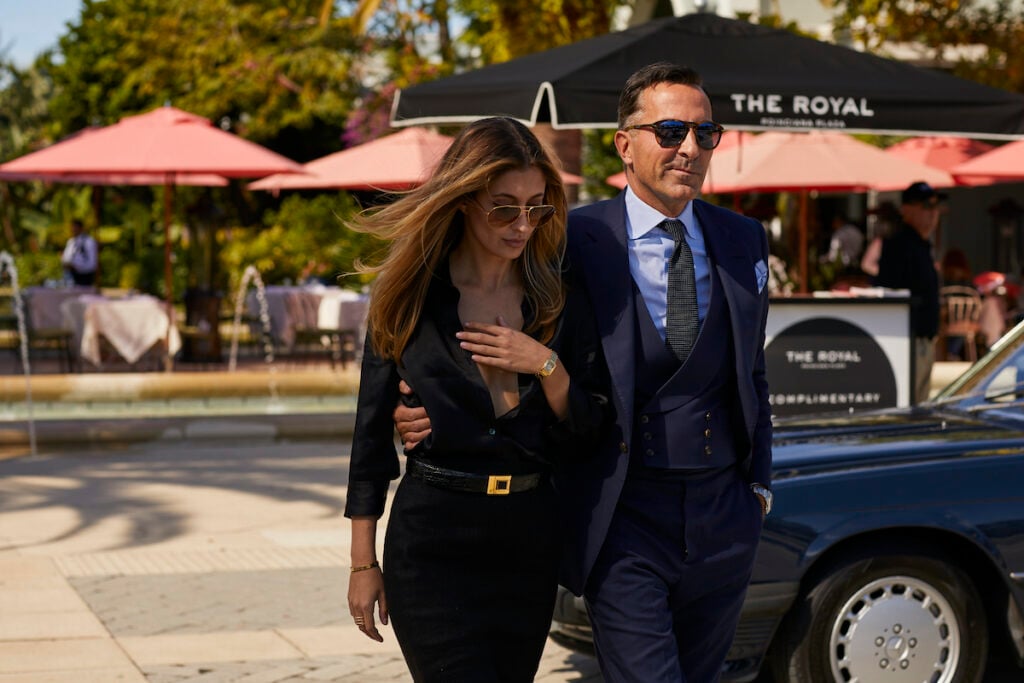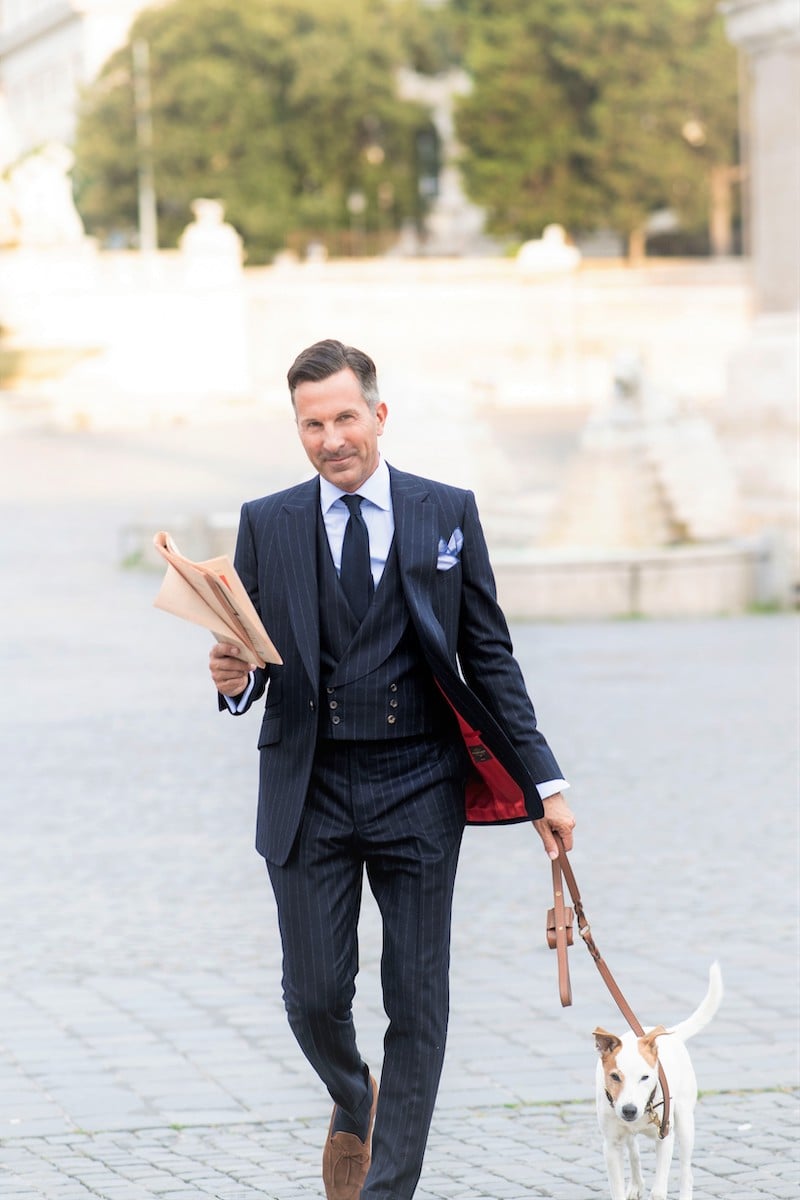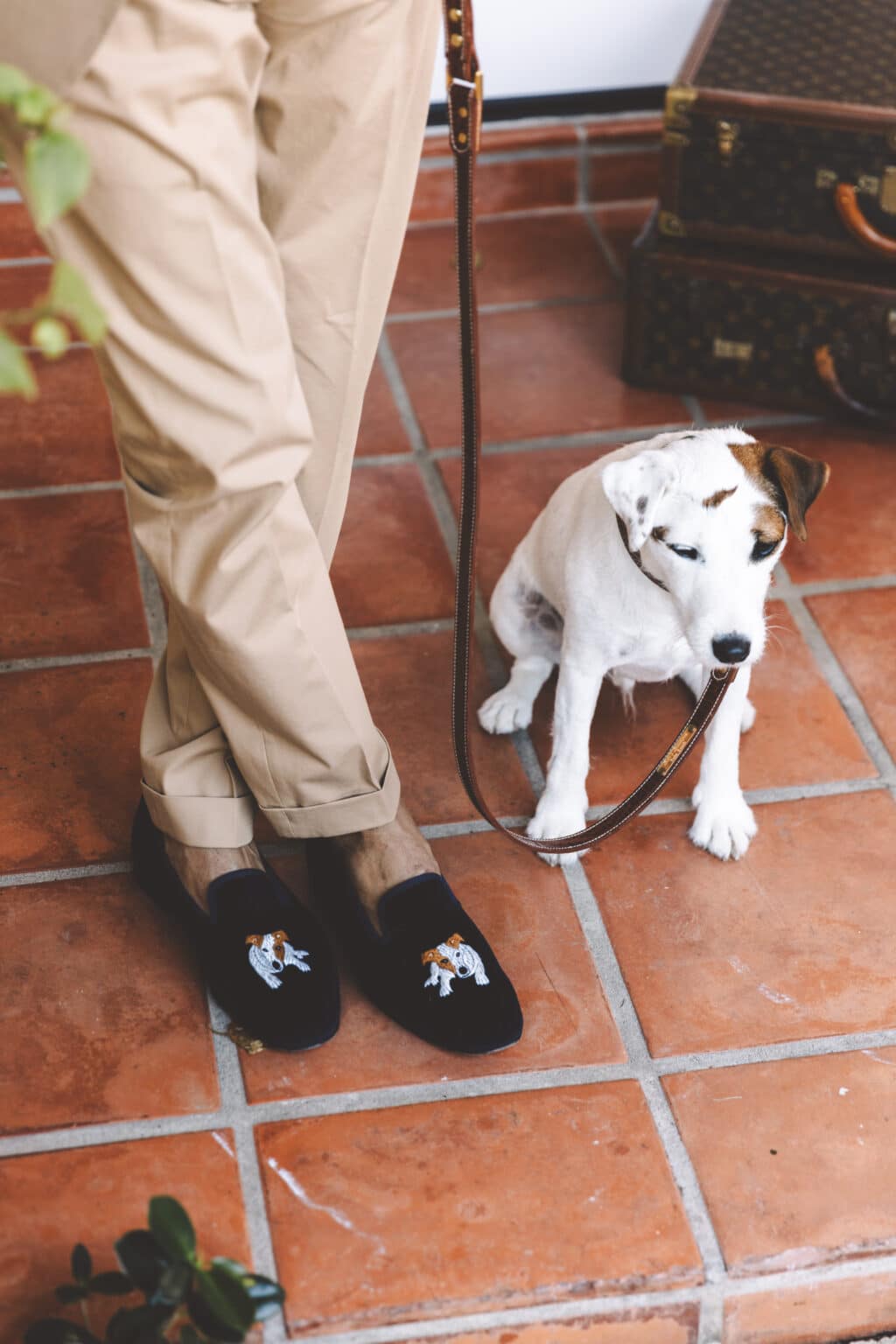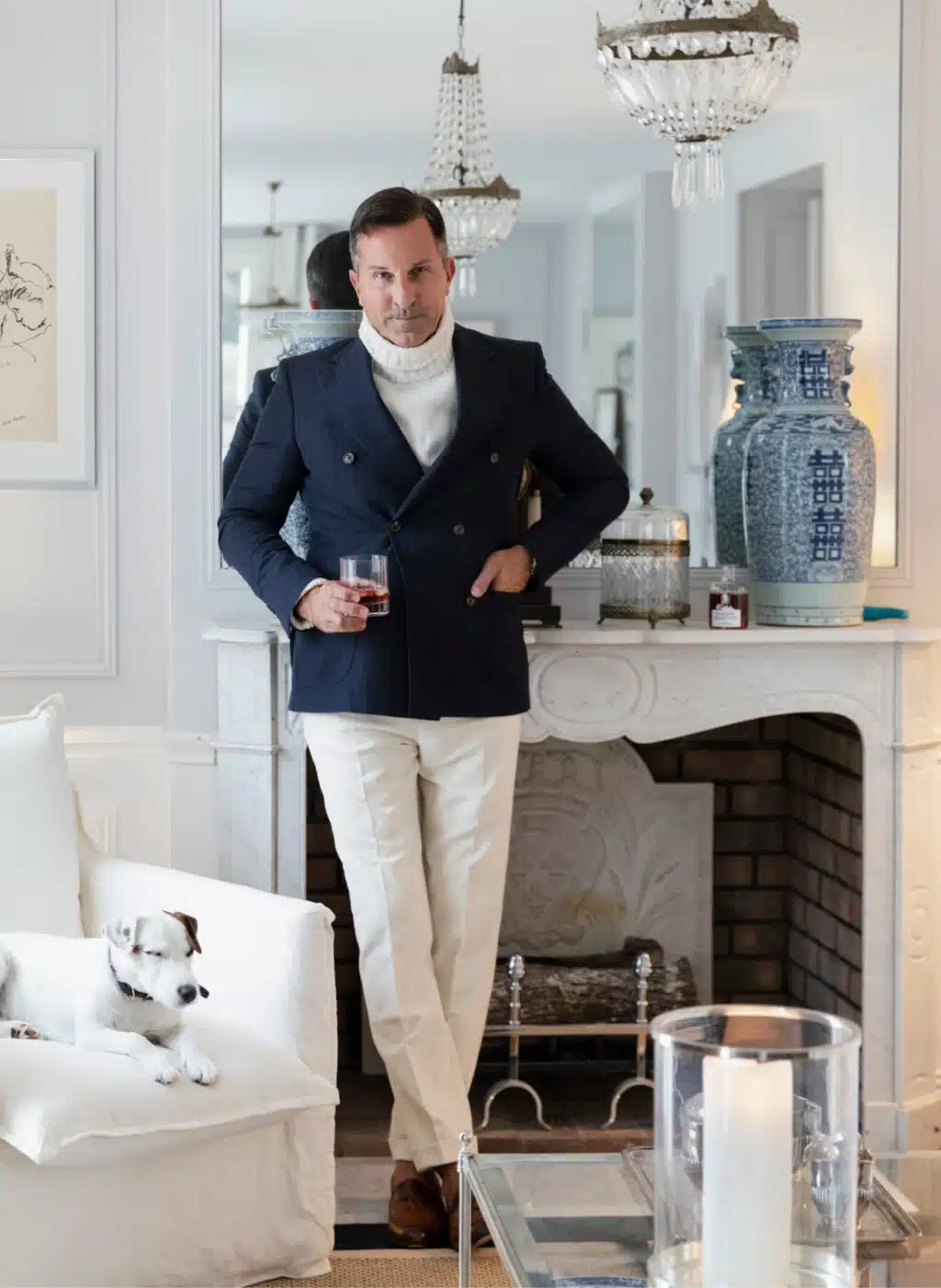- Finely Krafted Weekly Magazine / Sartorial
Three-Piece Sweet
- Date:
Author: Stuart Husband
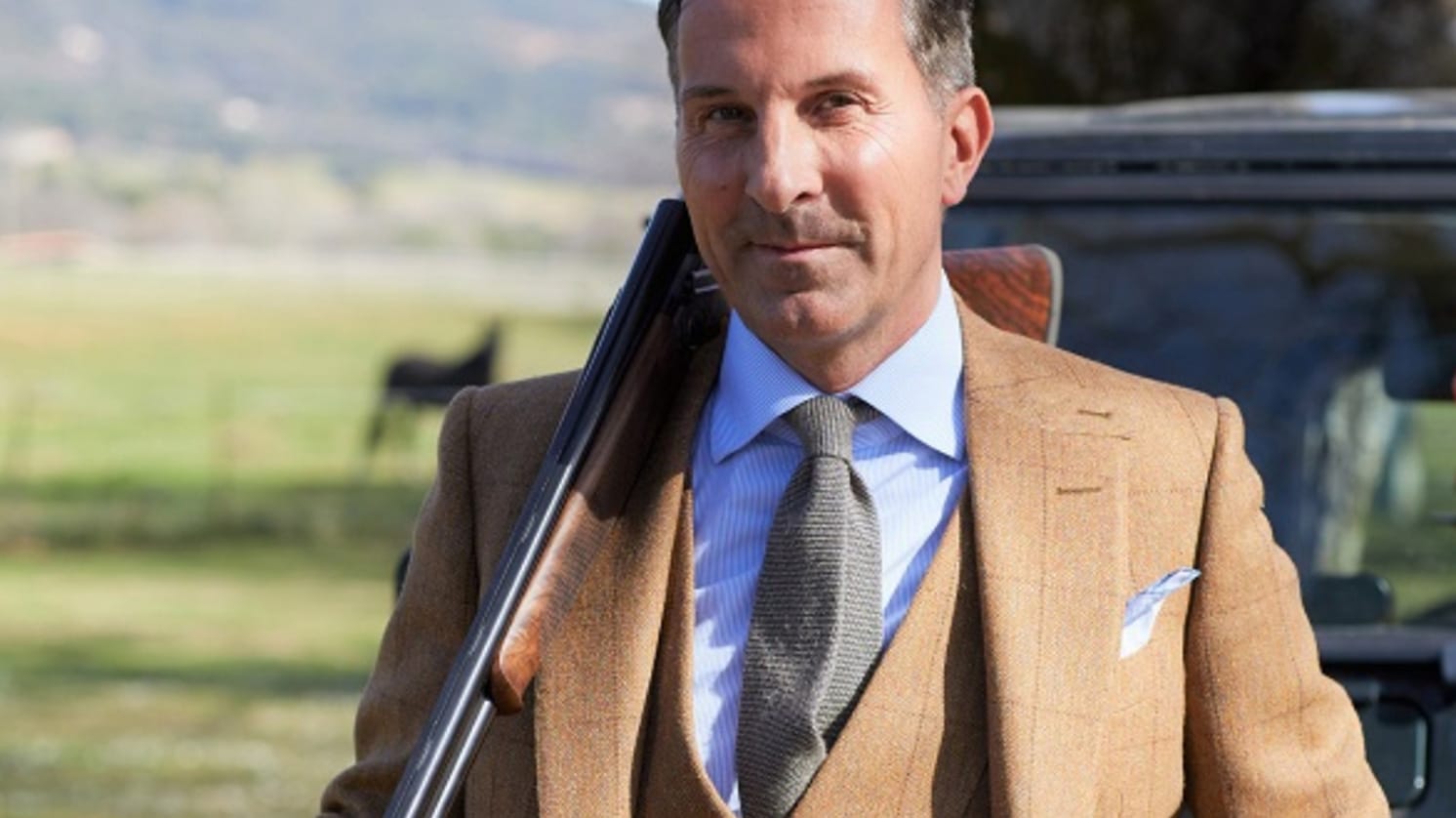
What’s in a name? When it comes to the waistcoat, quite a lot. Yes, it’s a garment designed to encompass – and flatter – the midriff, adding poise and gravitas to an outfit. And yes, one of its origin stories is derived from the 17th-century British army’s thrifty practice of turning a worn-out greatcoat inside out and removing the sleeves, thus creating a “waste coat.”
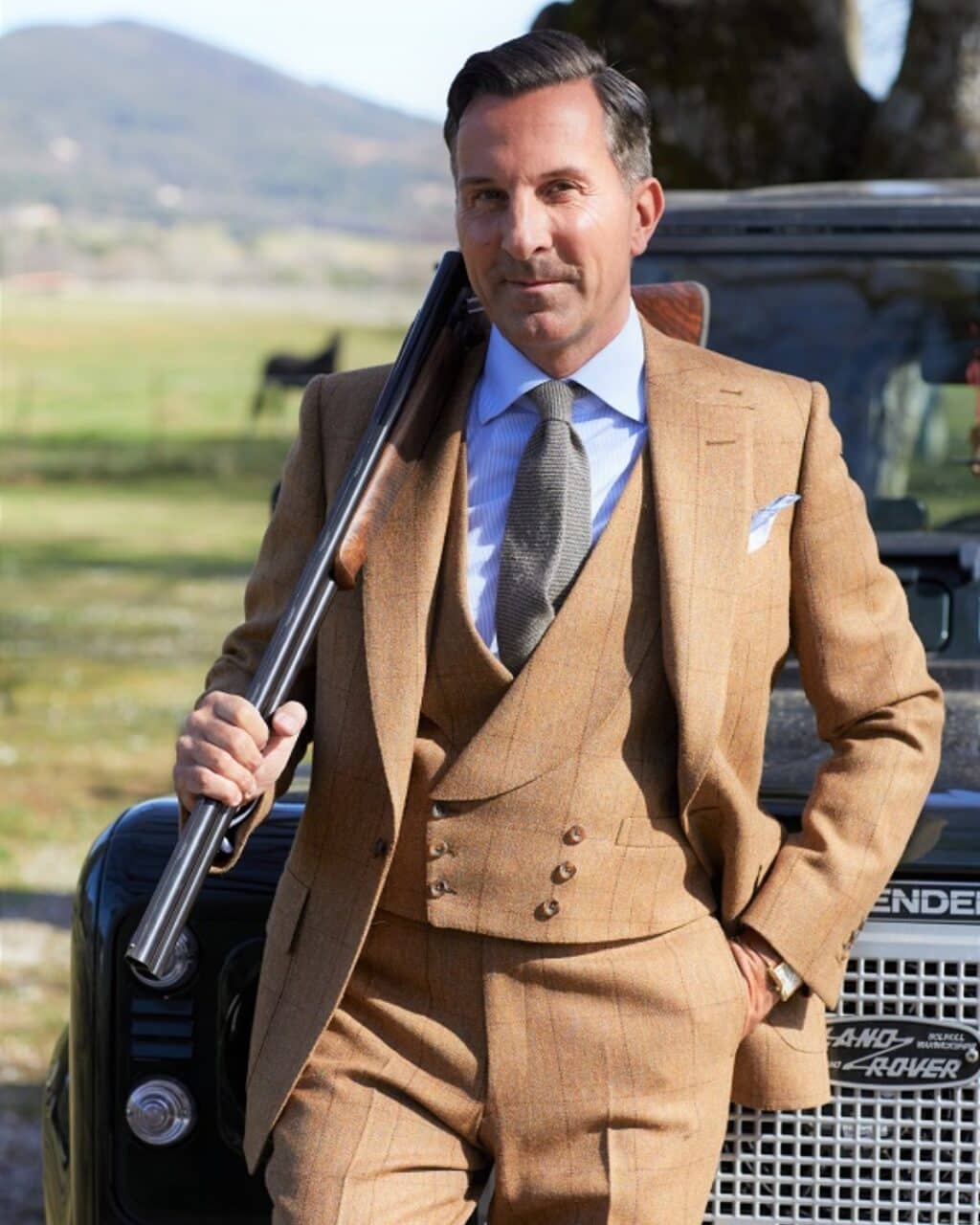
Over the centuries, the waistcoat has gone in and out of fashion; it’s been overlooked, and even maligned. But it’s also been criminally underrated. “Waistcoat, want not” might be an apposite motto for a shape-shifting item that confers both next-level formality (when worn by bankers or lawyers) and rock ‘n’ roll loucheness (when worn by Romantic poets, cowboys, or Tommy Shelby from Peaky Blinders). Byron wore a velvet iteration over his flouncy blouse. Queen’s Brian May has designed his own version, in an eye-catching guitar-print pattern. England football manager Gareth Southgate’s dapper navy number, worn ostentatiously on the sidelines during the World Cup of 2018, came to symbolise the team’s reinvigorated professionalism and provoked a stampede to the shelves of Marks & Spencer, its manufacturer, where it quickly sold out. And Alexander Kraft Monte Carlo has ushered in a revival of the double-breasted waistcoat, equally at home when accessorising tailoring or more casual looks. “Waistcoats provide a sense of depth and an extra point of interest when putting an outfit together,” declared GQ magazine. “They’re always the smart insider choice.”
Crowned heads might be the ultimate insiders, and Charles II of England is widely regarded as the progenitor of the waistcoat. In October 1666, the diarist Samuel Pepys wrote: “the King hath yesterday in council declared his resolution of setting a fashion for clothes which he will never alter. It will be a vest. I know not well how.” The idea was to sucker-punch the French, long dominant in matters sartorial, by popularising an English innovation – a long, sleeveless garment beneath a coat, usually in silk, “patterned after the Persian style,” according to John Evelyn, and very much meant to be seen and appreciated as le style Anglais. Pockets were later added for the storage of watches and their fobs, which were secured via a chain to the waistcoat or jacket lapel. In the 19th century the fit became shorter, tighter, and almost corset-like, as the vogue for broad shoulders and a nipped-in waist took hold among the dandies, the flaneurs, and crucially, Prince Albert, who rocked a Jagger-esque 28-inch waist. By the time the Edwardian era rolled around, straighter lines and fuller figures were in vogue – hence Edward VII’s being credited with the innovation of undoing the bottom waistcoat button, now de rigueur in style terms but then an essential release for his ballooning paunch following yet another less-than-frugal repast.
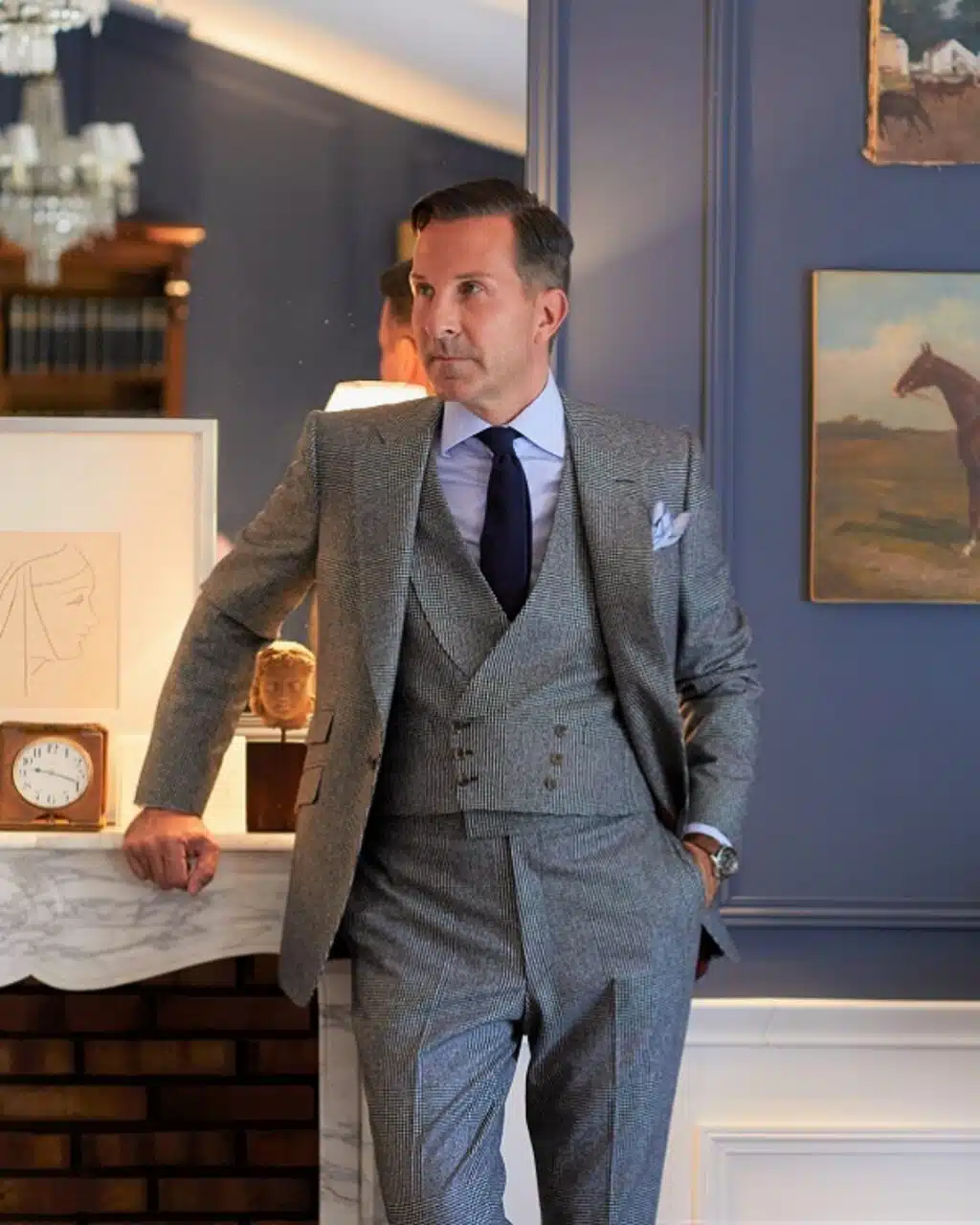
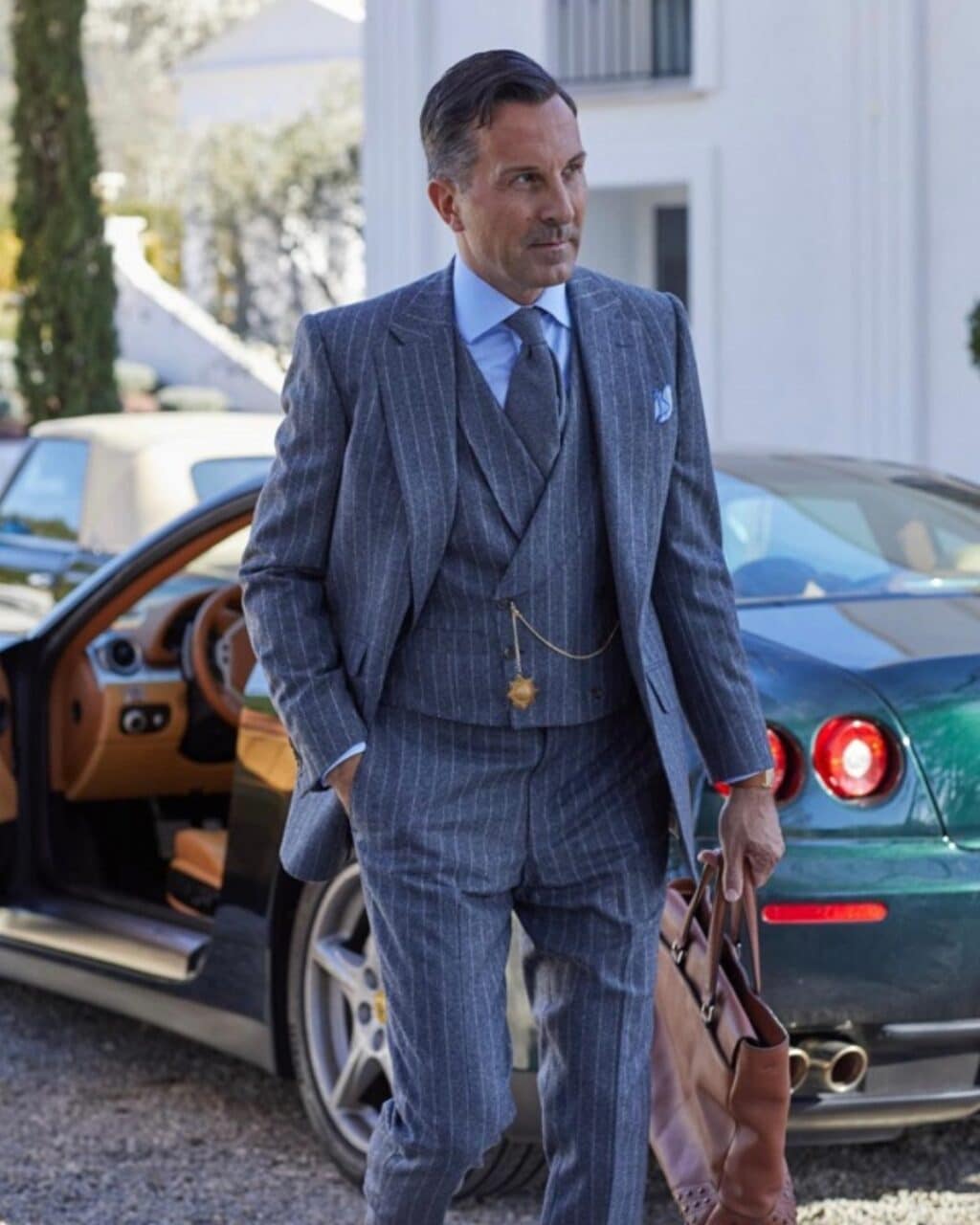
More recently, the waistcoat’s protean versatility has rendered it at once timeless and timely. It’s been the go-to style statement for outsiders craving respectability (Michael Corleone in The Godfather) and insiders craving a frisson of danger (Steve McQueen’s knife-edged Prince of Wales check number in the original Thomas Crown Affair). It’s been sported by loners and rebels (Clint Eastwood as The Man With No Name, Heath Ledger’s vivid red lapelled number in The Dark Knight, the neo-Edwardian swagger of the original Teddy Boys) and pillars of the establishment, from Prince Charles to Jay-Z. The double-breasted waistcoat, long a staple of morning suits, was given a new lease of life by Ralph Lauren’s collaboration with costume designer Theoni V. Aldredge for the 20s-meets-70s looks of Robert Redford in the 1974 movie version of The Great Gatsby; for the film’s climax, he wears a pink linen suit made all the more beautiful-and-damned by the addition of a six-button, shawl-collar “vest” (as the Americans, then as now, insist on calling it). It was this style, tweaked and refined, that Alexander Kraft and his tailors drew on more than a decade ago in bringing the double-breasted waistcoat to a new and eager audience; today, the AK MC double-breasted “Gatsby waistcoat” in off-white cotton corduroy is among the brand’s most popular lines. “When I first started wearing them, it was picked up by the press and social media and the whole thing just exploded,” says Kraft. “But I’m not at all surprised; in an era of loungewear, it makes an almost radical statement. And whether they’re in cotton, flannel or corduroy, there’s no better way to pull an outfit together.”
Things falling apart? Centre not holding? That’s where, for the past 350 years or so, the waistcoat has come in. It’s the way to button up without being too, you know, buttoned-up. Perhaps Charles Dickens – an inveterate waistcoat-wearer – paid this multifaceted garment the ultimate tribute: “Dignity, and even holiness, too, sometimes,” he said, “are more questions of coat and waistcoat than some people imagine.”
Similar Articles
VAT ID FR00285409991
New client offer
15% on your first order
Please sign up for the AK MC newsletter to receive exclusive insights into the world of Alexander Kraft as well as previews, exclusives and seasonal offers
